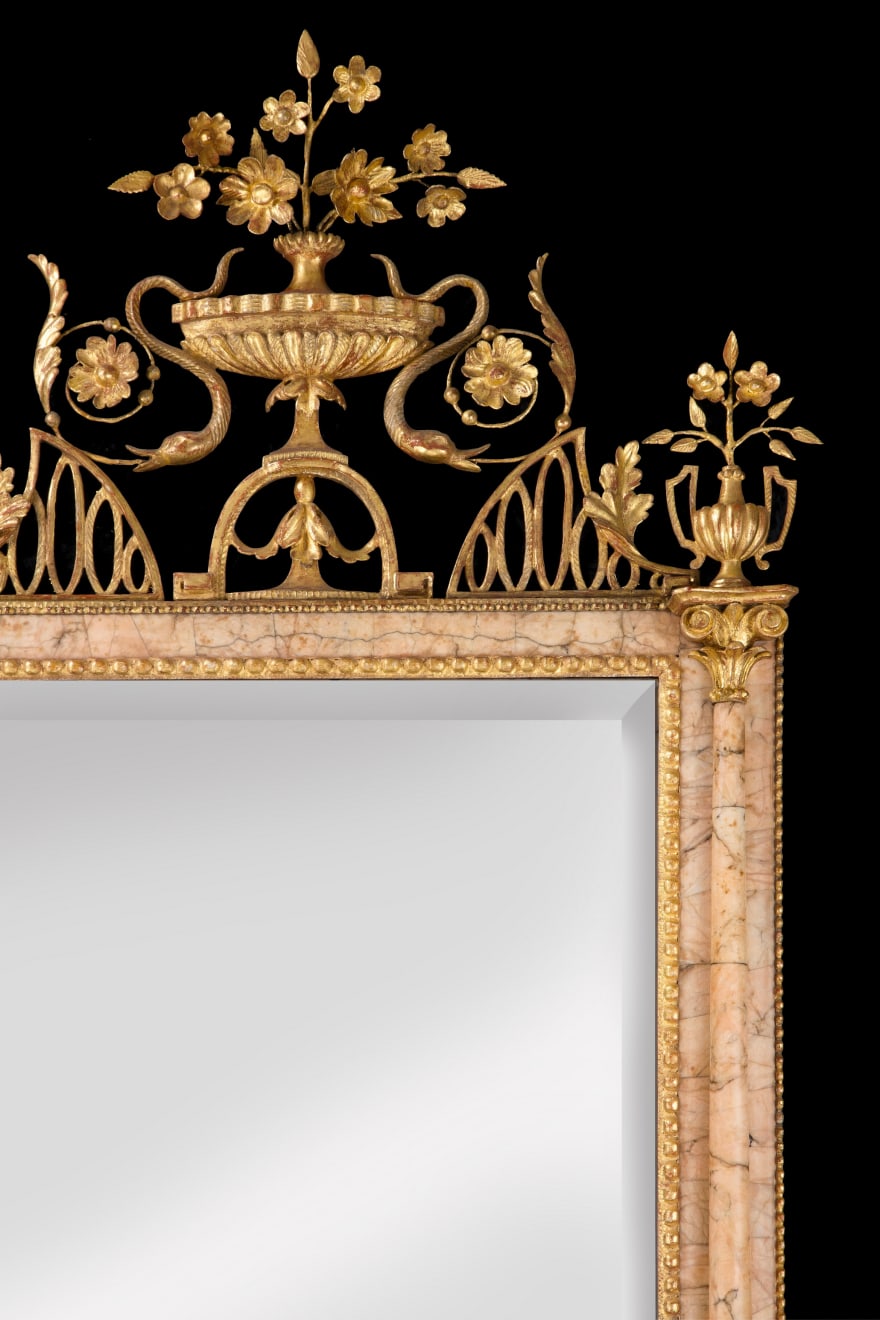A Pair of Spanish Neoclassical Gilt-Gesso and Pink Marble Bilbao Wall Mirrors
Label of the importer Bernard Cermenati of Newburyport, Massachusetts, circa 1805-10
135 x 62 cm
Further images
Provenance
Imported and retailed by Bernard Cermenati (Newburyport, Massachusetts) c.1805-1809. Collection of Judge Arthur Beane Sr and his wife Mimi Clarke, daughter of the noted silver expert Herman Frederick Clarke. They collected in the 1920s and 1930s, and lived in the William Sever House in Kingston, Massachusetts, after which they moved to Duxbury, Massachusetts. By descent to Arthur Beane, Jr.Literature
In The Looking Glass in America, 1700-1825, by Helen Comstock, a pair of similar Bilbao mirrors are illustrated, p. 80, fig. 53.With gilded gesso over wire frame ornamentation at both the top and the base, including motifs of flowers, vases and two serpents on each mirror. The marble frames have columns on either side. With minor restorations to the ornament and original gilding, both mirrors retain the original glass. The labels read: “Bernard Cermenati, Carver, Gilder, Picture Frame and Looking Glass Manufacturer, No. 10 State Street – Newburyport.”
Bilbao mirrors reached America about 1790-1810 in some thus far unexplored phase of [America’s] trade with Europe. They take their name from Bilbao (formerly sometimes written Bilboa), a port in northwestern Spain near the French border that was frequented by American merchant ships in the 18th century.” (Comstock op. cit.) Interestingly, these mirrors retain the original label of their importer Bernard Cermenati. Cermenati was an Italian immigrant working in eastern Massachusetts in the early nineteenth century. His earliest recorded advertisement was on August 28th 1807, in Newburyport, as a carver, gilder and looking-glass and frame maker. His store there was located at 10 State Street. He remained there for two years before removing to Salem at the end of 1809, and is listed in the Boston directories in 1811 and from 1813 to 1818.














